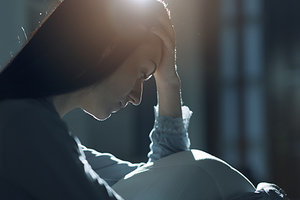Sleep issues are disturbingly common in a "normal" world, but the past few years have been anything but normal. That means even more patients may be presenting to your clinic with various manifestations of sleep dysfunction – including insomnia.
The active group received 10 sessions of acupuncture (bilateral HT 7 and KI 7) over three weeks; the sham group via sham acupoints with shallow needling (also 10 sessions over three weeks). Primary outcome measures included the Pittsburgh Sleep Quality Index (PSQI) and Insomnia Severity Index (ISI), evaluated at baseline, posttreatment, and at two follow-ups.
 Secondary outcome measures included polysomnography (PSG) on two consecutive nights, the Beck Anxiety Inventory (BAI), the Beck Depression Inventory (BDI) Fatigue Severity Scale (FSS) and the Epworth Sleepiness Scale (ESS), evaluated at baseline and posttreatment.
Secondary outcome measures included polysomnography (PSG) on two consecutive nights, the Beck Anxiety Inventory (BAI), the Beck Depression Inventory (BDI) Fatigue Severity Scale (FSS) and the Epworth Sleepiness Scale (ESS), evaluated at baseline and posttreatment.
Posttreatment, PSQI scores decreased by 5.04 in the acupuncture group vs. 2.92 in the sham acupuncture group (statistically significant); as were differences in ISI scores: 7.65 lower in the acupuncture group vs. 5.05 in the sham group. Polysomnography also showed "significantly lower levels of sleep onset latency (SOL), a lower percentage of sleep stage N1 and a higher percentage of sleep stage N3 in the acupuncture group than in the sham acupuncture group." Because these differences were not significant at follow-ups, the authors suggest that while the point combination used was effective in the short term, other point combinations also deserve investigation.
Source
- Wang C, et al. Impact of acupuncture on sleep and comorbid symptoms for chronic insomnia: a randomized clinical trial. Nature Science & Sleep, 2021;2021(13):1807-1822. Click here for free full-text access.
Acupuncture Today editorial staff members research, investigate and write articles for the publication on an ongoing basis. To contact the Editorial Department or submit an article of your own for consideration, email mailto:
.



